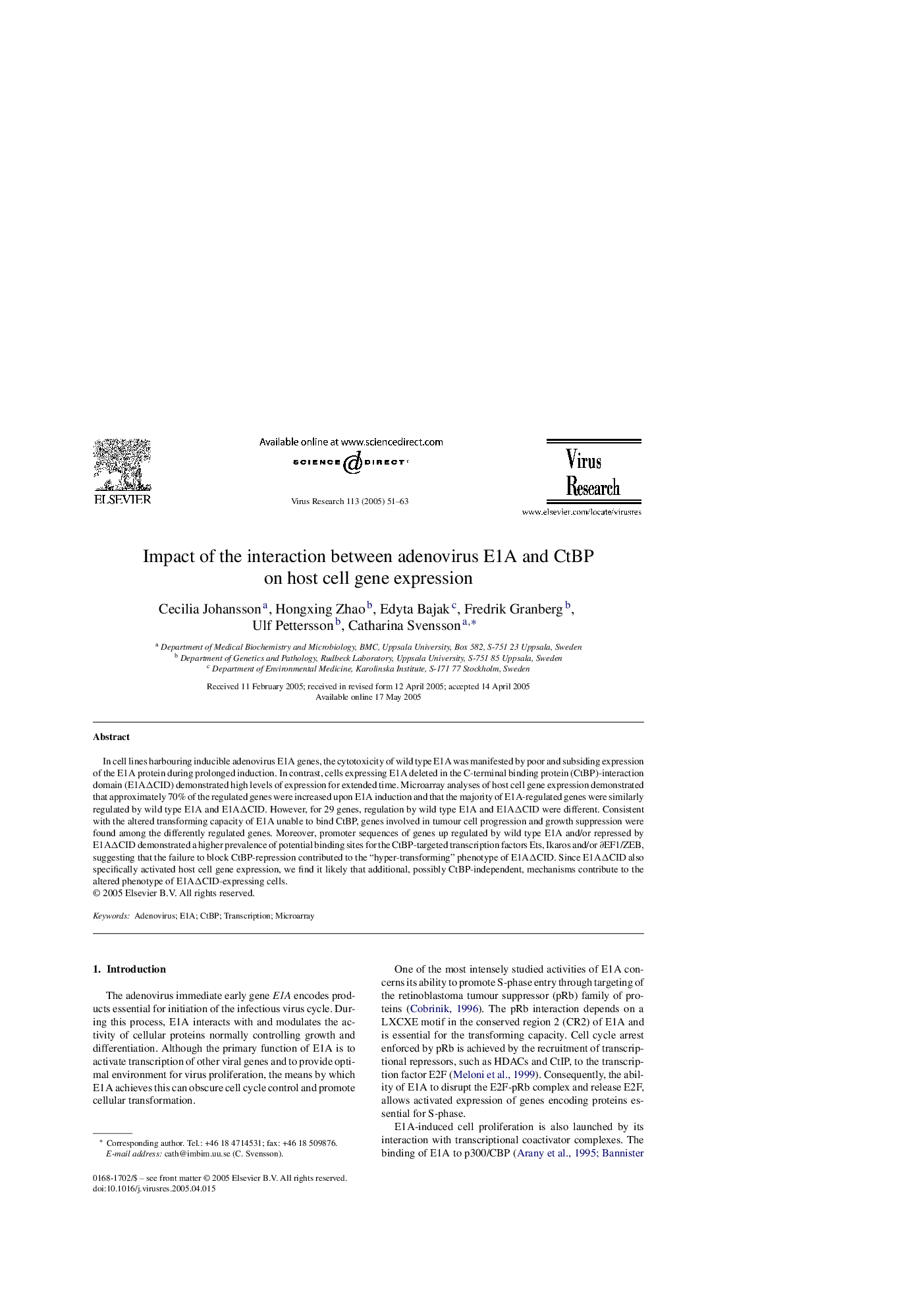| Article ID | Journal | Published Year | Pages | File Type |
|---|---|---|---|---|
| 9289329 | Virus Research | 2005 | 13 Pages |
Abstract
In cell lines harbouring inducible adenovirus E1A genes, the cytotoxicity of wild type E1A was manifested by poor and subsiding expression of the E1A protein during prolonged induction. In contrast, cells expressing E1A deleted in the C-terminal binding protein (CtBP)-interaction domain (E1AÎCID) demonstrated high levels of expression for extended time. Microarray analyses of host cell gene expression demonstrated that approximately 70% of the regulated genes were increased upon E1A induction and that the majority of E1A-regulated genes were similarly regulated by wild type E1A and E1AÎCID. However, for 29 genes, regulation by wild type E1A and E1AÎCID were different. Consistent with the altered transforming capacity of E1A unable to bind CtBP, genes involved in tumour cell progression and growth suppression were found among the differently regulated genes. Moreover, promoter sequences of genes up regulated by wild type E1A and/or repressed by E1AÎCID demonstrated a higher prevalence of potential binding sites for the CtBP-targeted transcription factors Ets, Ikaros and/or âEF1/ZEB, suggesting that the failure to block CtBP-repression contributed to the “hyper-transforming” phenotype of E1AÎCID. Since E1AÎCID also specifically activated host cell gene expression, we find it likely that additional, possibly CtBP-independent, mechanisms contribute to the altered phenotype of E1AÎCID-expressing cells.
Related Topics
Life Sciences
Immunology and Microbiology
Virology
Authors
Cecilia Johansson, Hongxing Zhao, Edyta Bajak, Fredrik Granberg, Ulf Pettersson, Catharina Svensson,
